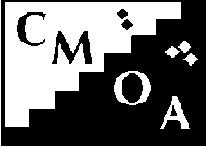
CAREER MEDICAL OFFICERS BULLETIN Volume 1 Number 1 December 1996
How Healthy is the Doctor?
The AMA and the NSW Branch are continuing our commitment to a safe work-place in hospitals. On Friday August 30th 1996 the Federal AMA launched a nation wide media campaign on the AMAs policy and strategy for Occupational Health and Safety for young doctors in hospitals.
The strategy involves two main objectives:
An important aim of the strategy is to place the management of occupational health and safety within the context of best practice in the health care industry. The strategy focuses on a safe system of work. This includes the setting of appropriate standards for:
All employers have an obligation under law to provide a safe system of work for employees as part of their `Duty of Care'. The strategy to promote a safer system of work for hospital medical officers involves the development of a national code. The AMA has set the year 2000 as the planned date for the implementation of the national code of practice.
Young doctors do all the things they tell their patients not to do. Work long hours, do crippling shifts, come to work ill and tired, ignore their own well-being, moonlight for extra cash and basically work themselves into a state of exhaustion.
We hear all the old arguments: the hospital can't afford it, it had always worked that way, it's not that bad really, it will never happen. But these arguments do not hold water. Hospitals can no longer afford NOT to implement proper Occupational Health and Safety.
All the major industrial developments of today were won after hard battles. Anti-discrimination, Equal Pay, Employee Superannuation all were considered a pipe dream when they were first suggested. These are all battles which have been fought and won, and we must continue to fight if we hope to win.
Please contact the Industrial Office of the NSW Branch of the AMA for further information.
Noelene Salmon, Industrial Officer of the NSW Branch of the AMA, kindly attended the afternoon session of the Inaugural Meeting of the CMO's Association, and spoke on the topic of the AMA's Safe Hours Campaign. With the anticipated changes in career options for RMO's already looming on the horizon, her words about the absolute necessity to put in place real standards of work practice safety could not be more timely.
Whether we like it or not, supply and demand, budgetary realities, and improved employment conditions make uneasy bedfellows. Those of us who work in hospitals will face the unvarnished reality of an increasing supply of cheap junior staff doctors with nowhere to go. It is, er, unlikely that at a local level hospital doctors' industrial bargaining power will actually increase in those circumstances.
Such standards for hours and conditions as the AMA seeks to find the
means to implement and the teeth to enforce will be a crucial step in protecting
the well-being of hospital doctors in the future, and are deserving of
our every support. Many thanks to Noelene for taking the time to tell us
what is being done and providing this summary of the AMAs position.
 Return to Vol 1 No. 1 Contents Page
Return to Vol 1 No. 1 Contents Page
 Return to CMO Bulletin Menu
Return to CMO Bulletin Menu
 Return ASCMO (formerly CMOA) Home Page
Return ASCMO (formerly CMOA) Home Page